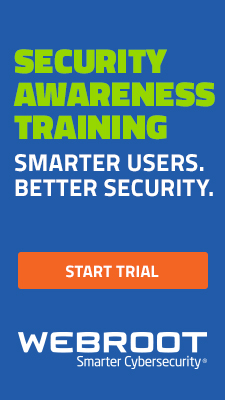In today’s digital world, your personal data is like cold hard cash, and that’s why cyberthieves are always looking for ways to steal it. Whether it’s an email address, a credit card number, or even medical records, your personal information is incredibly valuable in the wrong hands.
For hackers, breaking into a company database is like hitting the mother lode, giving them access to millions of personal records. Why? Because whether you know it or not, many companies are collecting and storing your private data. Think about all the information you hand over when you order something online, like your full name, your credit card number, your home address, and maybe even your birthdate just to snag an extra discount. If a company you do business with becomes part of a data breach, cybercriminals may have full access to your confidential information.
Unfortunately, data breaches are on the rise and affecting more companies and consumers than ever. In 2024, more than 1.3 billion people received notices that their information was exposed in a data breach. Chances are you’ve received at least one of these letters, which means you have been put at risk for identity theft and major financial losses.
What are data breaches and how do they happen?
Data breaches occur when sensitive, protected, or confidential data is hacked or leaked from a company or organization. Sometimes businesses are targeted because they have outdated or weak security. While no industry is immune, some sectors are more likely to become victims of breaches because of the sensitive nature of the data they handle. Here are some of the most likely targets for access to consumer data:
- Healthcare organizations: Healthcare companies are a prime target for cybercrime due to the large amounts of sensitive data they store, which includes personal information and medical records. In 2024, there were 14 data breaches involving 1 million or more healthcare records. The largest breach affected an estimated 190 million people and a ransom of 22 million dollars was collected by the hackers.
- Financial services industry: Banks, insurance companies and other financial organizations offer a wealth of opportunity for hackers who can use stolen bank account and credit card information for their own financial gain. In 2024, mortgage lender LoanDepot was the victim of a cyberattack that compromised the information of more than 16 million individuals.
- Retail and e-commerce: Retail and ecommerce businesses are vulnerable to breaches because they handle and store vast amounts of customer payment information, including addresses, credit card numbers and more. Many retailers operate both brick-and-mortar stores and ecommerce platforms and rely on a variety of mobile apps, PoS (point-of-sale) systems, and cloud-based platforms, which creates more entry points for hackers to exploit.
- Tech companies: With access to user data, software systems and intellectual property, tech firms are frequent targets. Apple, Twitter and Meta have all reportedly been victims of cyberattacks.
- Government agencies: Because government organizations store highly sensitive information, social security numbers, they are considered especially high-value targets for cyberattacks.
The most-wanted data
The type of information stolen in data breaches varies depending on the organization, but here’s a list of the kind of data cybercriminals are seeking:
- Emails and passwords
- Payment and credit card information
- Medical records and health data
- Social Security numbers
- Driver’s license numbers
- Banking details and account numbers
What hackers do with your data
Once data is exposed in a breach, cybercriminals will test your usernames and password combinations across thousands of sites, knowing that most people recycle their emails and passwords. Here are just some of the ways hackers exploit your stolen information:
- Identity theft: Hackers use your personal info to impersonate you. They can open accounts in your name, apply for loans, and even file false tax returns.
- Selling it on the dark web: Stolen data is frequently sold to the highest bidder on dark web marketplaces. This makes it accessible to a worldwide network of criminals.
- Phishing and social engineering: Using your personal information, scammers can craft more convincing phishing emails or messages to trick you into giving up even more sensitive details, like passwords and PIN numbers.
- Financial exploitation: When your credit card numbers or bank account details are compromised, cyber thieves can use that information to make financial transactions in your name. They can rack up charges on your credit cards and even drain your bank accounts.
- Data reuse and repurposing: It’s important to remember that your stolen information can be used for fraud and theft even years after a data breach, so it’s crucial to stop using recycled usernames and passwords on both old and new accounts or systems.
- Hijacking online accounts: If your login credentials (usernames and passwords) are leaked, all your online accounts are put at risk. Besides your financial accounts, cyber thieves can also access your social media accounts and other platforms, leading to a major loss of privacy in addition to monetary losses.
How to minimize the risks
- Stay alert: Be on the lookout for any signs of fraud and use an identity protection plan to guard against suspicious activity. Webroot Total Protection monitors the dark web for you and sends alerts if your email or personal information has been found in a breach.
- Use strong, unique passwords: Strong, unique passwords are a simple, yet powerful security tool. Webroot Essentials plans offer password managers that do the hard work for you, keeping all your passwords safe and encrypted while you remember just one password for a quick and seamless login on every site and app.
- Enable two-factor authentication (2FA): Turn on two-factor identification wherever possible, especially for financial accounts and email. This adds an extra step to your login process and makes it much harder for hackers to gain access. Also, remember to update and reset your passwords on a regular basis and always delete any old, unused online accounts.
- Keep your devices protected: Always keep your device software updated and use antivirus and internet security software. Webroot Premium protects your devices from malware, viruses and phishing attempts and provides identity protection so you’re immediately alerted if your information is leaked in a data breach or found on the dark web. If you do become a victim of identity theft, you’ll have 24/7 U.S.-based customer support and up to $1 million in expense reimbursement.
- Update your identity protection plan: Remember to keep your identity protection plan updated, so your personal details like birthdate, Social Security number and driver’s license number are current. Make sure all your family members are onboarded, especially children and older relatives. Also, get real time fraud detection by setting up threshold alerts on your financial accounts so you’re notified of any suspicious transactions as soon as they occur.
- Monitor constantly: It’s important to remember that even if your personal data was exposed years ago, it can still resurface and cause problems at any time. Especially when it comes to children and the elderly, suspicious financial activity can happen without their knowledge and go undetected. For example, it’s not uncommon for a young student to find out they have a poor credit score only when they to try to open their first credit card account. The student had no idea that a cybercriminal used their information for fraudulent purposes and is forced to go through a difficult and costly process to restore their good credit. Most identity protection plans include monitoring and remediation, even if the fraud happened years ago and is affecting you or your family today.
Data breaches are a fact of life in the digital world we live in, but you can protect yourself with some smart security measures. By using strong passwords, password managers, antivirus software, and identity protection plans, you can reduce your risk of becoming a victim of cybercrime, and even get help to restore your identity, your financial losses and your reputation.
It’s like putting a lock on your personal data. When it comes to your sensitive information, it’s always better to be safe than sorry.
Looking for more information and solutions?
Keeping educational systems secure
How to keep your personal data safe
Protect yourself from identity theft
Safeguarding your devices from malware






